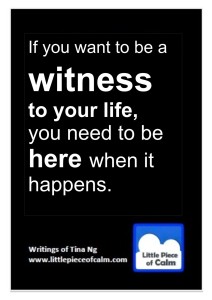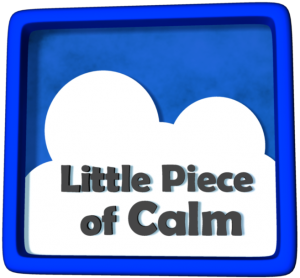 The time we spend living our life is not as often as we think. In fact, life is experienced most intimately exactly in those times when we don’t think.
The time we spend living our life is not as often as we think. In fact, life is experienced most intimately exactly in those times when we don’t think.
This may be a difficult fact to grasp. After all, thinking takes up so much of our mental activity, we have come to accept it as being a necessary part of our minds. For many people, they cannot think of what it would be like to not think. They cannot imagine what it would be like to have a mind that is quiet and free from the endless chatter and commentary that accompanies us every moment of the day.
So we develop an attachment to thinking. An ingrained habit to think. We have been conditioned to judge ourselves and others on our ability to think. We believe that it is our intelligence that separates our species with other species, and indeed we even separate our own species into classes based on our different levels of intelligence. We think our thoughts give us the power to be creative, imaginative, innovative, analytical and above all, to survive in this fight of the fittest. To not think would lead us to act with reckless disregard for others and the consequences of our actions, to fall into chaos without any plans or structures, and regress developmentally into babies.
And so we hang onto our thoughts. We place them on a pedal-stool in our minds and believe in everything that is projected by it. We believe the stories that are conjured up; we get lost in our fantasies; we relive our distorted memories of the past; we worry about problems we think may arise in the future; we torture ourselves with anxiety and fear from the movies playing in our minds. What is most concerning is how we allow our thoughts to rule us – throwing us into anger and worry with thoughts of negativity, then entrapping us with thoughts of desire, shrouded with a layer of illusions.
In time, we come to experience the world through our thoughts, perceptions and interpretations. Most of the time, these are distorted perceptions and misinterpretations. So many times we think we know something, or interpret events a certain way, only to find out later that we had got it all so very wrong.
So we come to see the world not as it is, but as we think it is or as we think it should be. Over time, we forget there is a way to experience life directly, and that to truly see the world and our life for what it is, we can only do so by removing the filters that stand in between us and the reality that is occurring at each moment.
So the practice for this week is to bear witness to your life. To come closer to reality than you have ever before. To truly understand that your thoughts play a role in your life in helping you navigate this world, but your thoughts are not you, nor are they in command of you.
Here’s some ways I’ve found have helped ground me in reality:
1. Be present: Reality only occurs in the here and now. By the time you contemplate what has occurred, the reality is already replaced by what you think took place. Likewise, contemplating what is to come is simply you guessing what will take place. So if you want to see reality for what it is, you need to be here for it, at the time when it happens. As you become more centred in the present, you remove the tendency to jump into the past or the future.
2. Be open: So much of our time is spent on resisting what is happening or being afraid of what will happen. Conversely, we may be chasing after what has past or what has yet to come. Being open to the present moment as it is, without wanting to change it in any way, takes away the filters of fear, worry, anger, and discontent.
3. Be observant: we spend so much of our time doing and rushing, or changing reality to suit us, that we don’t usually stop to just watch life unfold in its natural way. If we are to understand reality, our life, our nature, this existence, we must observe it in the same way a scientist observes without interfering.This kind of observation at its purest form is free from thinking, but a direct experience of what is occurring at the present moment.
In our observations, we move from observing the obvious to the more subtle and refined. For example, we move from observing our displays of anger, to our inner anger, to finally see the seeds and causes of our anger. To do so, we try to catch each spark of anger, watch how it stays, and watch how it disappears. Over time, we will see how anger operates; we come to understand anger and anger becomes a choice rather than an automatic reaction.
4. Be centred: There will be times when we are confronted with reality, we want to run away in pain, or we grab it tightly with desire, or we simply don’t know what to do with it. Being centred allows us to maintain an equanimous, calm yet strong mind, to face head on with whatever reality presents to us. It is this ability to be centred and equanimous that allows us to see clearly what is going on, without bringing our own emotions, self-interests and preconceptions into our observations of reality.
5. Be sharp: Unlike what people may think about direct observation, the lack of thinking does not mean the mind becomes dull, but quite the opposite. The mind becomes extremely sharp, sensitive and concentrated, so as to pick up very fine details and penetrate deeper into the reality of whatever object of observation you choose. Developing this ability, you build an awareness and concentration, that helps you direct your mind to whatever you wish to use it for. Your mind becomes less scattered and more focused. In daily life, you will see how the sharpness of your mind can also be used to sort through very quickly enormous data that your mind receives at every moment.
6. Be patient: The development of the mind is rarely achieved overnight. It is something that is developed over time, or perhaps over an entire lifetime. When you first begin, you will be inundated with thoughts. This is normal, as it is the habit of your mind to think. To help settle the thoughts, you need to be gentle with your mind. You need to give it the time and space for it to settle on its own, but you can help it by anchoring your mind on something, such as your breath if you are doing meditation. The idea is not to stir the thoughts up with more thoughts. In its own time, the mind will become clearer and the thoughts will quieten down.
Want to try?
To get an idea what it is like to experience life directly without the filters and to experience the richness of life, you can try this exercise. You may need to do it a few times or in different settings for it to work. Whilst doing this activity, see if you can feel the difference between the two experiences.
Firstly, find a spot on your body that is touching another surface, such as your legs or back. Try and describe that experience to yourself. Can you feel hardness, pressure, heat, etc?
Secondly, drop the descriptions and just feel the experience as a whole.
Do you notice a difference?
Try this at different moments throughout your day. When you’re on the train, when you have a moment to take in the last rays of sunshine, when you are out walking.
Do you notice a difference in the moments when you are in thought, and the moments when you open yourself to the experience as it is?
For me, when I first opened myself to the experience of walking as it is, it was like walking for the first time. Since then, these moments of direct experience of life fills my heart with a joy that is so extraordinary for the most seemingly ordinary things.
I wish you a joy that surpasses the worldly joys, and a life that is made up of moments that string together to make this life a most meaningful one.

 Posts RSS
Posts RSS


So, so glad you’re back! Missed you and your posts! 🙂
Thanks Bennett! 🙂